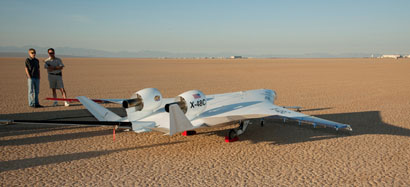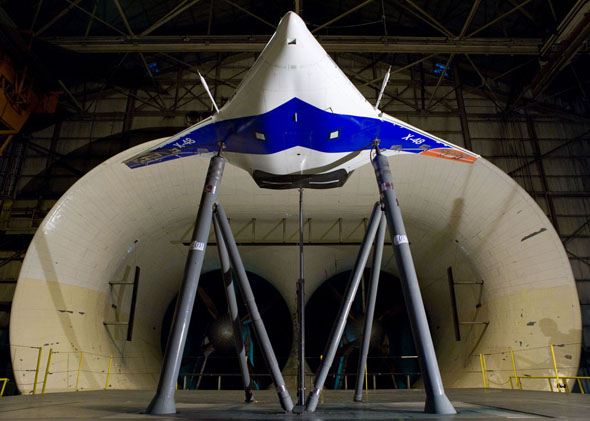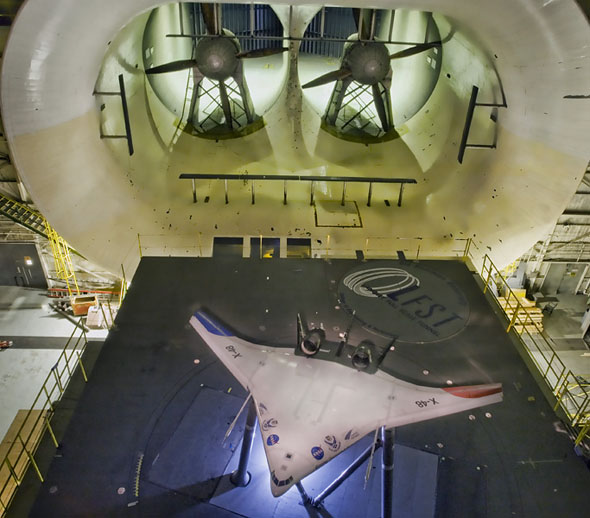

Boeing conducted the first flight of the remotely piloted X-48C experimental Blended Wing Body (BWB) unmanned aircraft yesterday at the NASA’s Dryden Flight Research Center at Edwards Air Force Base in California. The flight lasted 9 minutes and the aircraft climbed to an altitude of 5,500 feet before landing back on the dray lakebed.
The X-48C is a scale model of a heavy-lift, subsonic vehicle that forgoes the conventional tube-and-wing airplane design in favor of a triangular aircraft that effectively merges the vehicle’s wing and body. Boeing and NASA believe the BWB concept offers the potential over the long-term of significantly greater fuel efficiency and reduced noise. The X-48C is an 8.5 percent scale model of an aircraft with a 240-foot wingspan that possibly could be developed in the next 15 to 20 years for military applications such as aerial refueling and cargo missions.
The X-48C is a modified version of the X-48B aircraft, which flew 92 times at NASA Dryden between 2007 and 2010. The X-48B’s flight test program proved that a BWB aircraft can be controlled as effectively as a conventional tube-and-wing aircraft during takeoffs and landings, as well as in other low-speed segments of the flight regime. Primary changes to the C model from the B model were geared to transforming it to an airframe noise-shielding configuration. “With the X-48C, we will be evaluating the impact of noise shielding concepts on low-speed flight characteristics,” said Bob Liebeck, a Boeing Senior Technical Fellow and the company’s BWB program manager. The modified test vehicle was designed by Boeing and built by Cranfield Aerospace Ltd., in the United Kingdom, in accordance with Boeing requirements.
The newer version has a 21-foot wingspan and its weight is 500 pounds. It is configured with two 89-pound thrust turbojet engines, instead of three 50-pound thrust engines on the B-model; and wingtip winglets have been relocated inboard, next to the engines on the C-model, effectively turning them into twin tails. The aft deck also was extended about 2 feet at the rear. The vehicle has an estimated top speed of about 140 miles per hour and a maximum altitude of 10,000 feet.
Engineers from Boeing Research & Technology, the company’s central research, technology and innovation organization, will be working closely with NASA engineers during flight tests of the X-48C, which are expected to continue throughout 2012. As handling qualities of the X-48C will be different than those of the X-48B, the project team developed flight control software modifications, including flight control limiters to keep the airplane flying within a safe flight envelope.
The X-48C project team consists of Boeing, NASA, Cranfield Aeropace, and the U.S. Air Force Research Laboratory.


















